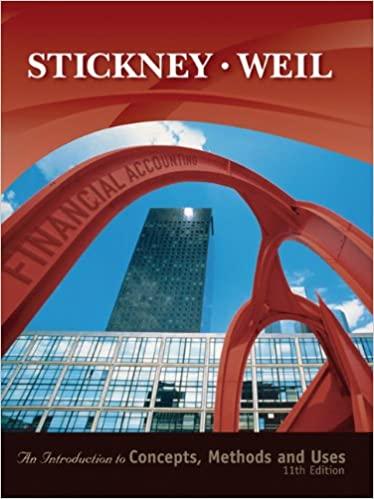Comparison of straight-line and effective interest methods of amortizing debt discount. IBM established IBM Credit Corporation (IBMCC)
Question:
Comparison of straight-line and effective interest methods of amortizing debt discount.
IBM established IBM Credit Corporation (IBMCC) on May 1, Year 1. On July 1. Year 1.
IBMCC issued $150 million of zero coupon notes due July 1. Year 8. These notes promise to pay a single amount of $150 million at maturity, seven years after issue date. IBMCC marketed these notes to yield 14 percent compounded semiannually. IBMCC may at any time redeem these notes, in part or in whole, for 100 percent of the principal amount.
IBMCC computes interest expense for financial reporting using the effective interest method but amortizes "original-issue discount" on the notes in equal semiannual amounts for tax report- ing. That is. if IBMCC issued the $150 million face value of notes for $66 million, the originalissue discount is $84 (= $150 — $66) million and the semiannual interest expense each period is $6 [= $84/(7 years X 2 periods per year)] million per year. Assume an income tax rate of 40 percent. The financial statements of IBMCC present the following data about long-term debt on December 3 1 , Year 1 :
(all dollar amounts in thousands)
14 3/8 Percent Notes Due July, Year 6 $100,000 Zero Coupon Notes Due July, Year 8 (Face Value of $150,000) 62,238
$162,238
a. Calculate the proceeds to IBMCC from issuing the zero coupon notes.
b. Compute the amount of interest expense reported on the income statement for these notes for the six-month period ending December 31, Year 1.
c. Compute the amount of the interest deduction on the tax return for Year 1 resulting from these notes. Assuming IBMCC can fully deduct this amount on its income tax return, how much does this reduce the income taxes payable that IBMCC would otherwise compute?
d. What was the amount of "Unamortized Discount" that relates only to the zero coupon notes on the balance sheet at the end of Year 1 ?
e. A news story in Year 2 reported the following:
[T)he Treasury wants to plug a tax loophole that has enabled companies to borrow billions of dollars cheaply. ... At issue is a tax break granted to companies issuing . . . "zerocoupon" bonds . . . and other deeply discounted debt instruments, which pay very low interest rates.
Describe the advantages to issuers and purchasers of zero coupon bonds. Give your interpretation of the tax loophole alleged by the U.S. Treasury. Be specific in your response by indicating the dollar amount of the "loophole" that IBMCC used in Year 1. What tax policy with respect to interest on zero coupon notes would you recommend?
Step by Step Answer:

Financial Accounting Introduction To Concepts Methods And Uses
ISBN: 9780324222975
11th Edition
Authors: Clyde P. Stickney, Roman L. Weil





